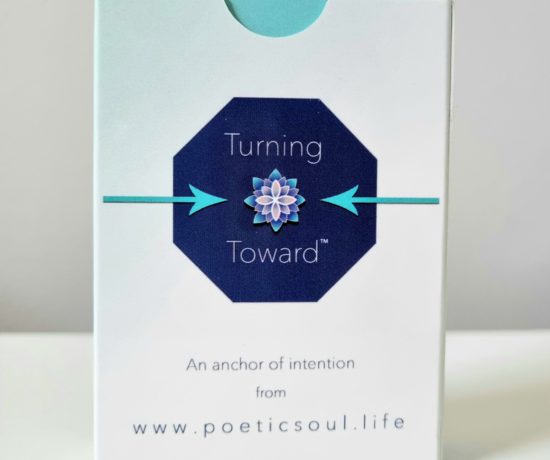Think about your daily routines. How soon after your feet hit the floor do you get sucked into the whirlwind of obligations that rush you out the door (or to your home office) and begin your race against the clock? If you’re like most of us, you’re probably on autopilot before you’ve even had a chance to remember to turn on autopilot. It’s become a natural state of being. We slip into habits that get us from point A to point B to point C to point D and back to bed to do it all again tomorrow. These routines serve us, of course. And we may even be good at them, but are we engaged? Are we present in our own lives, or are they passing us by unnoticed, unappreciated, unlived to some degree?
“Without an anchor, we drift, even on a calm day.”
If we are boats on the sea of life, the mindless execution of daily tasks creates a nearly imperceptible current that quietly causes us to drift off course. We may not be sinking, but we’re not in control of where we’re headed either. Nor are we aware enough of our surroundings to keep our bearings. If we get too distracted for too long, we may look up and not recognize where or who we are. Without an anchor, we drift, even on a calm day.
“Anchors of intention are brief but powerful moments of mindfulness that we purposefully incorporate into our days.”
To keep from wandering adrift, drop an anchor of intention daily. Anchors of intention are brief but powerful moments of mindfulness that we purposefully incorporate into our days. It can be a morning meditation, physical exercise, a focused time for prayer, a phone call or message to a loved one, an act of kindness, an expression of gratitude, recitation of a mantra, a moment to journal, a lunchtime walk, posing a question that will spark conversation, reflecting on your vision board, or creative expression. Anything that adds meaning to the mundane.
Explore opportunities to drop an anchor.
My husband and I began a mealtime gratitude ritual with our daughter several months before she turned two. We all join hands, and take turns sharing what we are thankful for before enjoying our food. For the first several months, her answer was the same at every meal: “Ollabah!” (Oliver, our dog) The concept of gratitude was new to her young toddler mind at the time, but through our consistent anchor of intention, she figured it out and now contributes a colorful variety of answers to our ritual. It started as a way of making sure gratitude didn’t escape us, but the outcome is that our daughter now freely and frequently expresses gratitude any time of the day, because it has laid a foundation of thankfulness in her heart, which far surpasses the intention we originally set out with.

I also engage in a daily yoga routine. It’s not always made up of intense, strength-building poses, though sometimes it is. Simply put, I commit to bending my body in each direction at least once every day. Some days it’s 10 minutes of gentle, relaxing poses just before bed, other days it’s 30 minutes of balance and core-strengthening. The intention behind my ritual is to remain flexible, strong, and centered. When I practice yoga, I step away from the world and back into my body. I become aware of its capabilities and how beautiful it feels to be alive. As Miriam-Webster defines the word anchor, it is “a reliable or principal support, a mainstay” of my days.
Deepening connections through anchors of intention.
Consider ways to anchor your days with intentionality. Figure out what makes you thrive and carve out a little time for it in each day. An anchor of intention can be anything that deepens a connection in your life. That can be a connection to someone you love, to your home, to your body, to nature, to your community, to your goals, or to your truest and best self. The important part is that you pause autopilot, step fully into a moment, breathe it in, let it nourish you, and experience the power of intentionality before resuming your normal activities. And perhaps in doing so, even your normal activities will take on an elevated level of mindfulness.





No Comments